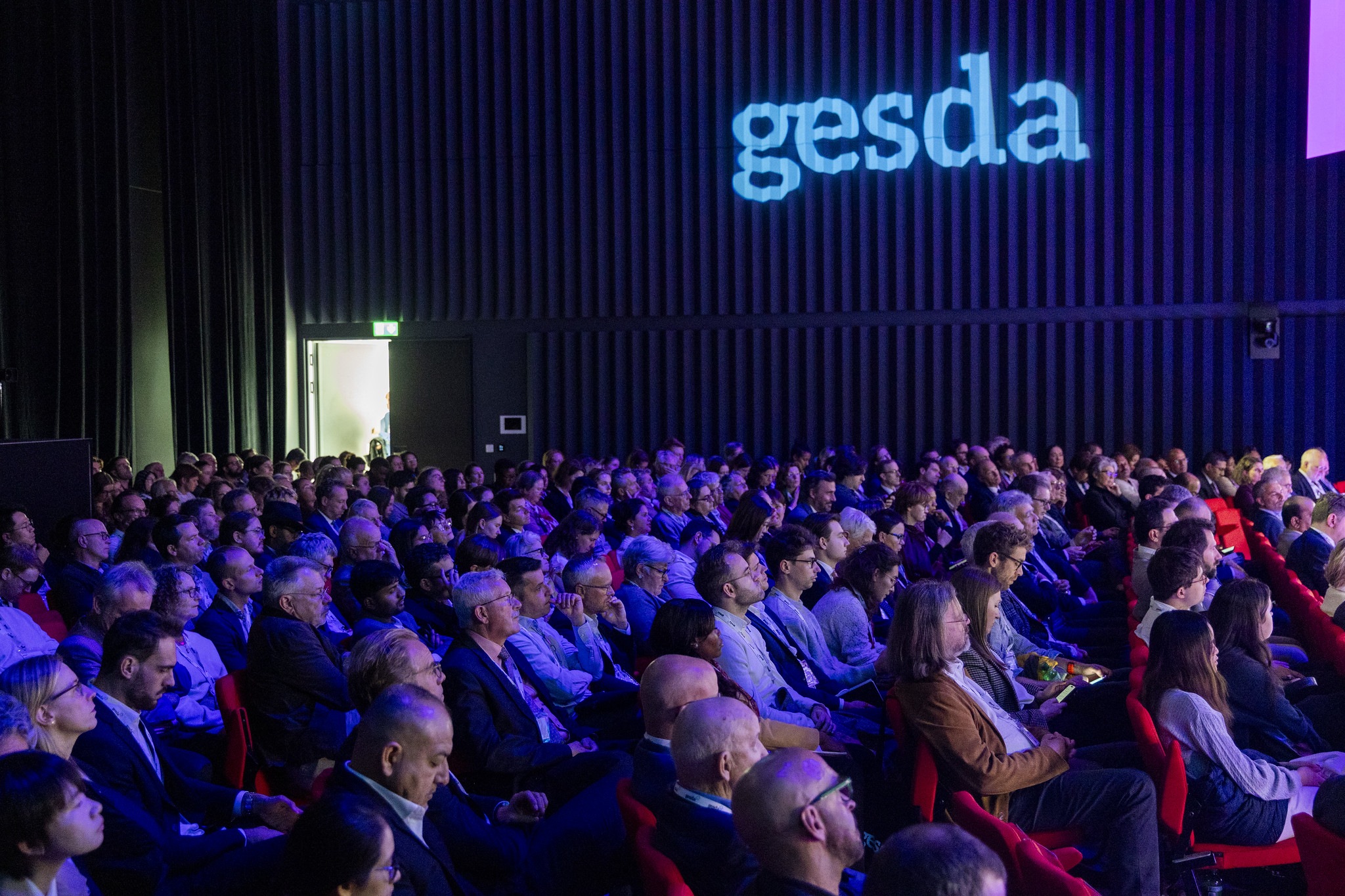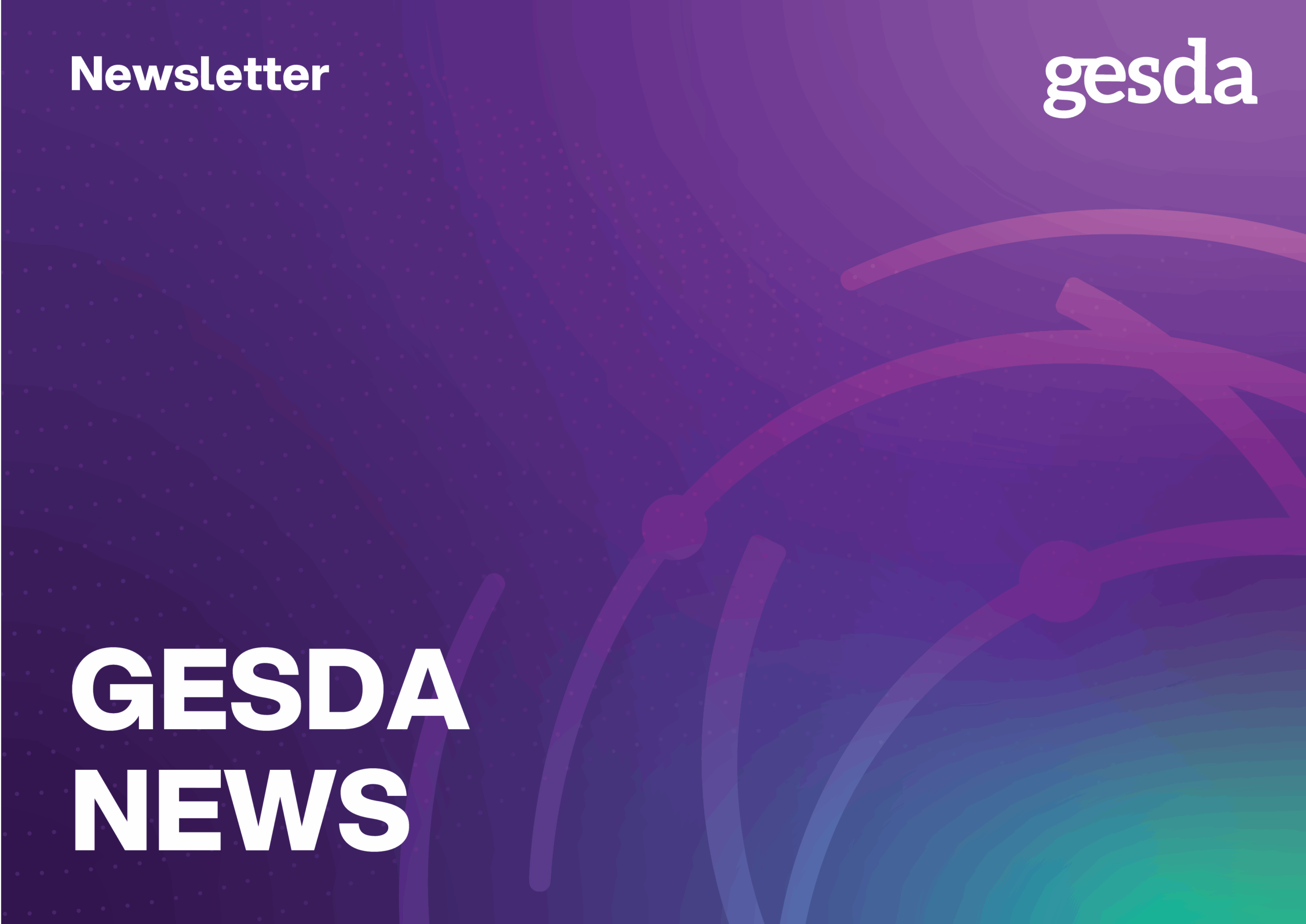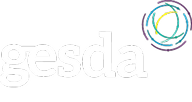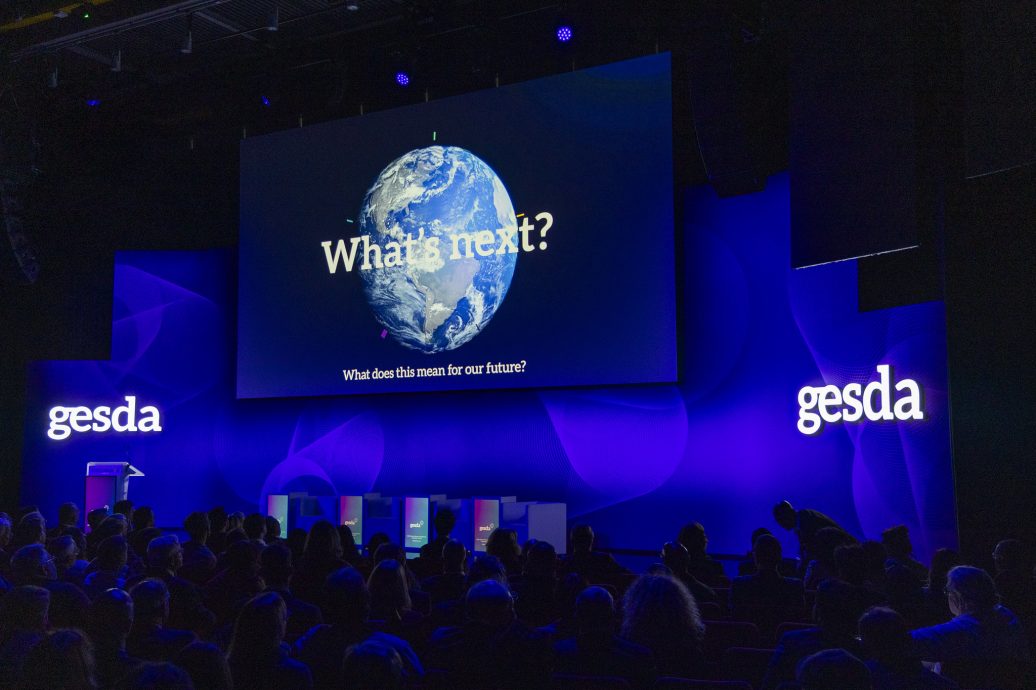
The New GESDA Radar: A Compass for a New Age
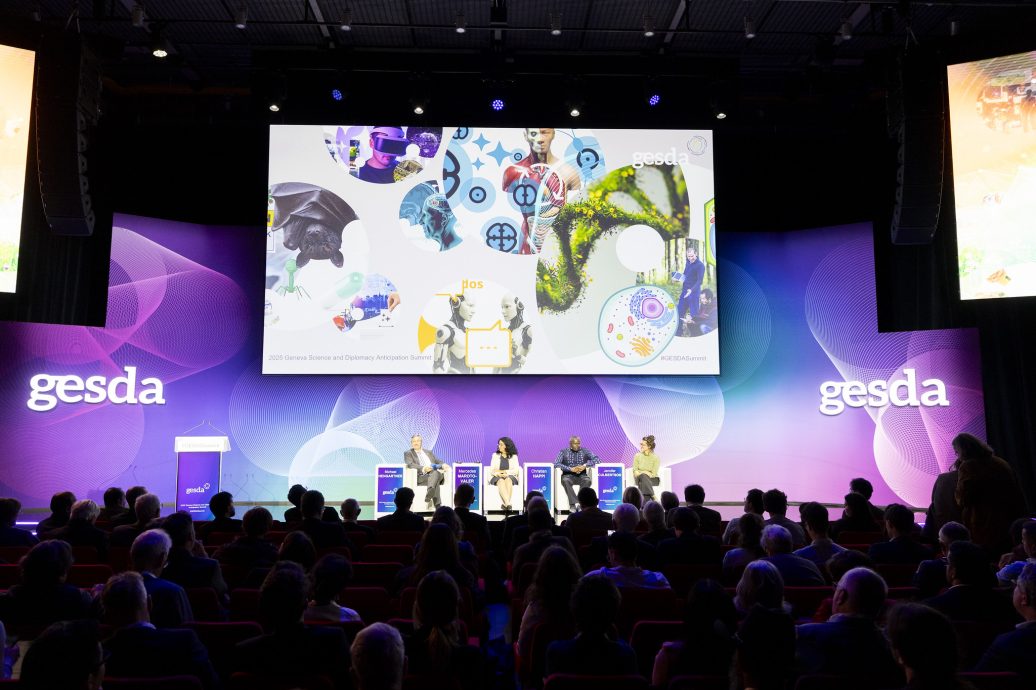
Science as the New Geopolitical Currency
Story by John Heilprin | All photos ©GESDA/Benedikt von Loebell
The central event of the first day was the unveiling of the 2026 edition of the GESDA Science Breakthrough Radar®. GESDA Chairman Peter Brabeck-Letmathe highlighted the urgency of the moment, noting that while change was anticipated, the sheer velocity of transformation in the world was unprecedented.
He described the Radar as more than just a report; it is a “compass” to navigate the “extraordinary possibilities” paired with “extraordinary risks” in a time where anticipation must guide responsibility and purpose.
“The choice of the future is not something that happens to us. The future is something we create,” he said.
Drawing on insights from 2,390 leading researchers globally, this year’s edition significantly expands its scope to include new topics like engineering human biology, ecology, language, and mathematics. The Radar identifies critical areas where advances are poised to fundamentally reshape humanity, societies, and the planet across nine transformative domains.
It emphasizes a major shift: science and technology now are a primary currency in international affairs. Nations are increasingly controlling the flow of knowledge and expertise as strategic assets. Fields such as AI, biotechnology, and space are new battlegrounds for global influence, presenting unprecedented challenges for scientific governance and collaboration.
Brabeck-Letmathe specifically mentioned the accelerating role of AI as a catalyst, along with breakthroughs in Brain-Computer Interfaces (BCI), advances in space exploration increasingly driven by private hands, and developments in biology and medicine, such as reversing aging and creating transplantable organs.
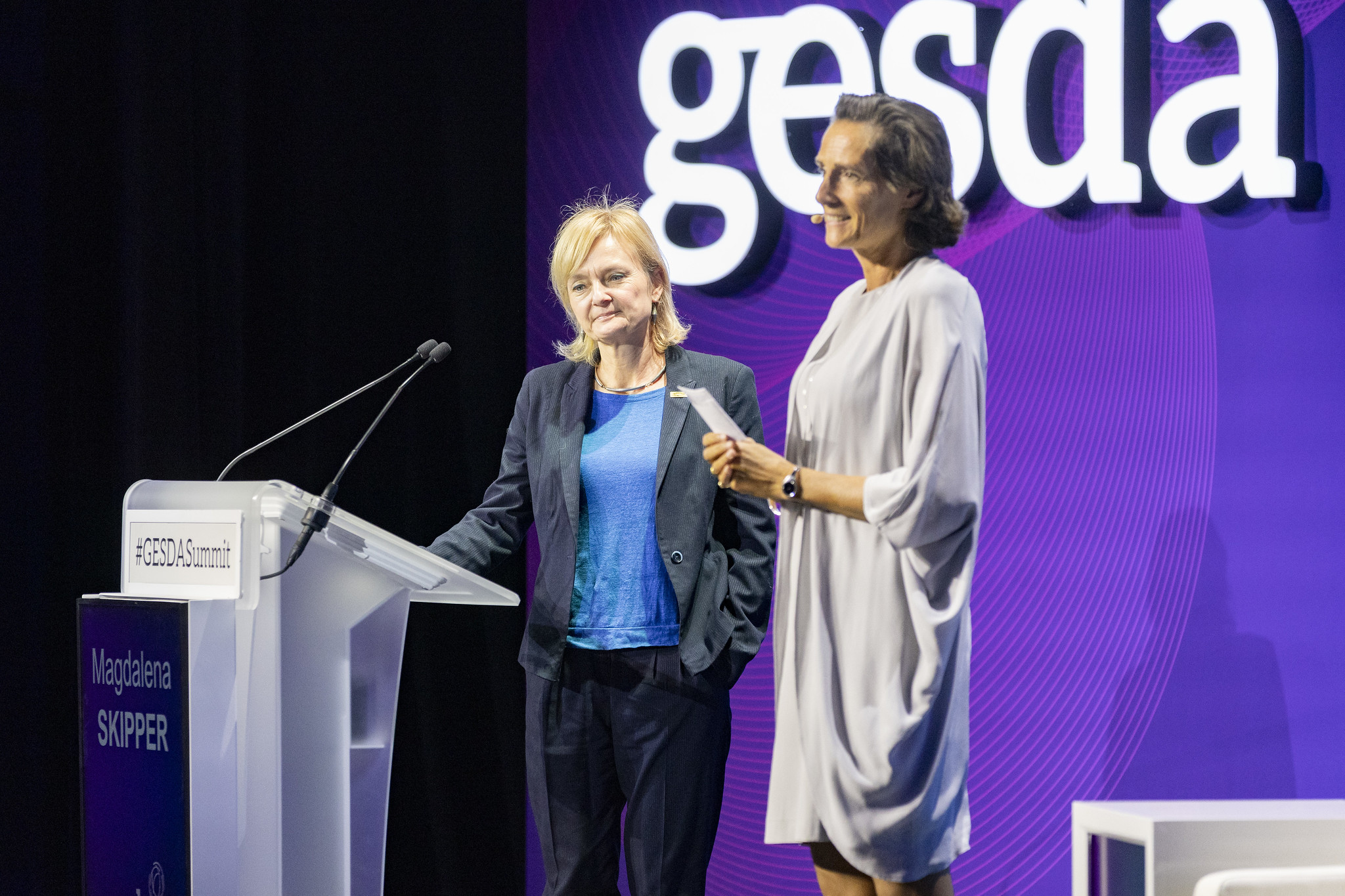 Magdalena Skipper, a GESDA Board Member, at left, and Marilyne Andersen, GESDA Director General, speak to the Summit.
Magdalena Skipper, a GESDA Board Member, at left, and Marilyne Andersen, GESDA Director General, speak to the Summit.
A Focus on Possibilities
The 2025 Summit, running from October 15 to 17, was themed “The Age of Possibilities: Science, Sovereignty, and a Shared Future,” under GESDA’s mission: Use the future to build the present. It addresses urgent global questions such as how to govern shared environmental systems; how diplomacy can stay ahead of dual-use risks; and how to ensure science benefits all nations.
GESDA Director General Marilyne Andersen framed the three-day summit as a time of “possibility,” aiming to translate science into action among the gathered communities of science, business, industry, diplomacy, and citizens of the world. She emphasized the goal of forming a “community of purpose” to address global challenges.
“We will work on these breakthrough ideas and work together on how they can be translated into action,” she said. “So we will form a community of purpose, working on the solutions that we need for these troubled and interesting times.”
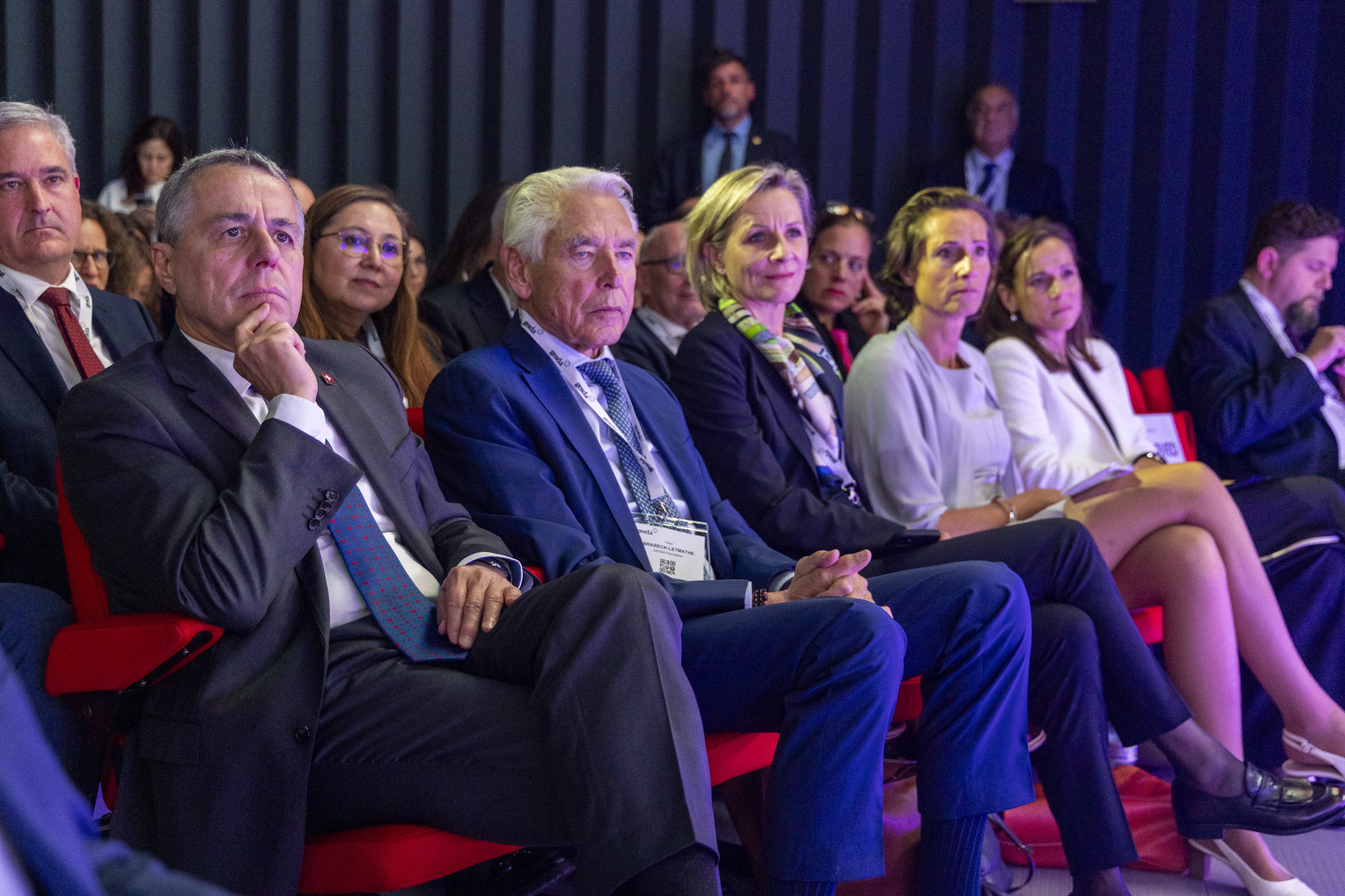 Ignazio Cassis, the Swiss Foreign Minister, at left, attends the GESDA Summit’s opening day.
Ignazio Cassis, the Swiss Foreign Minister, at left, attends the GESDA Summit’s opening day.
Canada scales anticipatory leadership
Andersen met with a large delegation of Canadian academic institutions, including the University of Montreal, University of Calgary, and McGill University, along with diplomatic leaders to kick off the development of a new collaboration to reinforce Canada’s robust science diplomacy ecosystem with anticipation.
The first spark of the collaboration started with the 2024 visit of Swiss Federal Councillor Ignacio Cassis to McGill University in Montreal, where GESDA’s new addition to the field was discussed: anticipation.
Through its capacity building program, GESDA has put considerable effort in recent years into ensuring that anticipatory science diplomacy supports leaders globally in navigating a complex world. The annual Geneva Science Diplomacy Week program and curriculum have been growing in popularity, and GESDA can now count on two Canadian alumni, Catherine Régis and Guillaume Lhermie, who will scale anticipatory leadership at a national level with the support of GESDA in June 2026 at Montreal.
Also at the summit, Canada’s Ambassador to Switzerland Jean-Paul Lemieux and Stephen J. Toope, President and CEO of the Canadian Institute for Advanced Research, launched the collaboration with a formal handshake on the main stage.
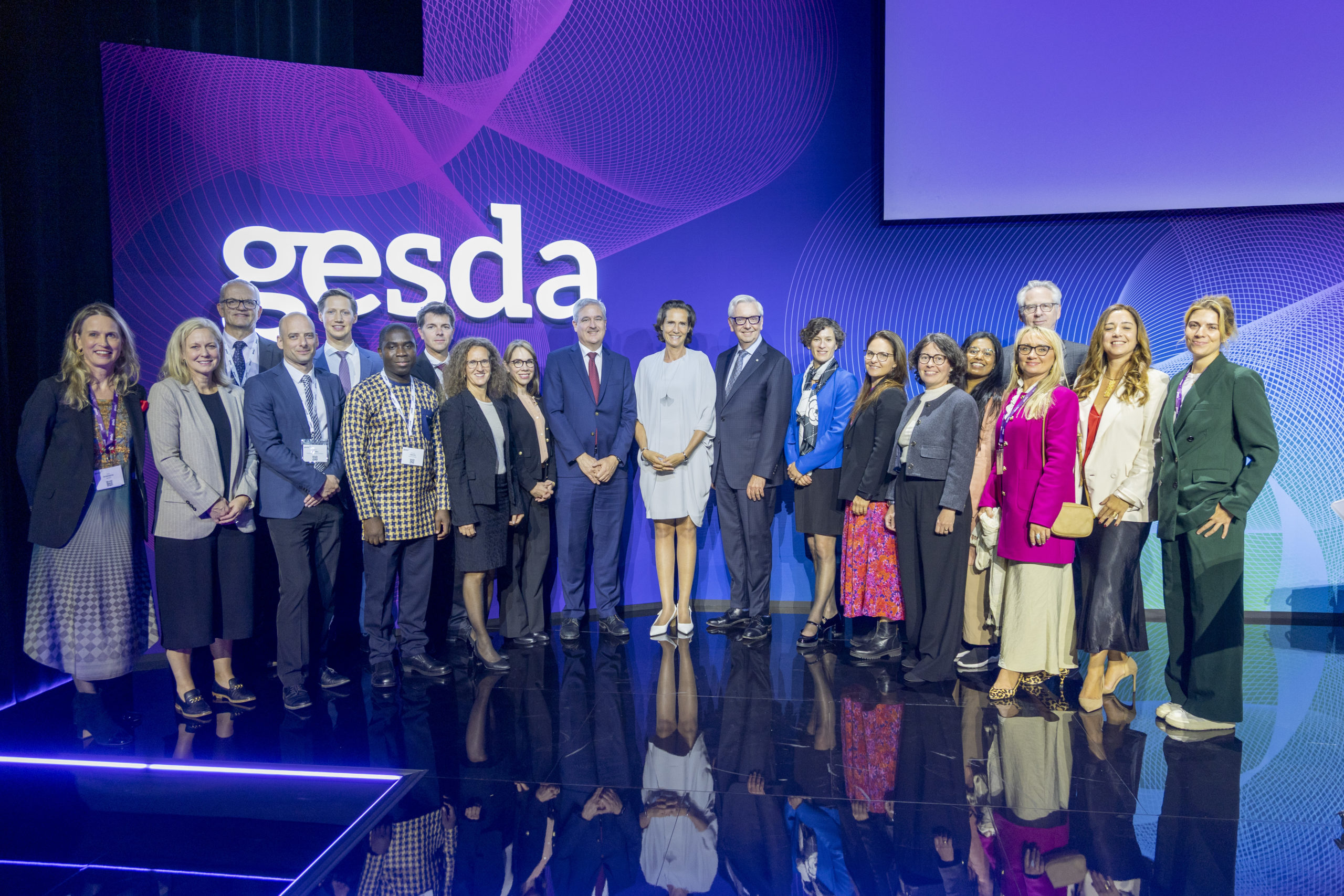 Left to right at the Summit : Guillaume Lhermie, Catherine Régis, William Ghali, Ed McCauley, Vincent Mooser, Laurent Corbeil, Buffy St-Amand, Valérie Boissonneault, Stephen Toope, Ebenezer Kwofie, Marie-Andrée Bernard, Jean-Paul Albert Lemieux, Marilyne Andersen, Daria Robinson, Marga Gual Soler, Catherine Lefebvre, Joanna Wiśniewsk, and Kirsi Beaumond.
Left to right at the Summit : Guillaume Lhermie, Catherine Régis, William Ghali, Ed McCauley, Vincent Mooser, Laurent Corbeil, Buffy St-Amand, Valérie Boissonneault, Stephen Toope, Ebenezer Kwofie, Marie-Andrée Bernard, Jean-Paul Albert Lemieux, Marilyne Andersen, Daria Robinson, Marga Gual Soler, Catherine Lefebvre, Joanna Wiśniewsk, and Kirsi Beaumond.
U.N. and Swiss Leaders Urge Action on Governance Deficit
Cassis, who as Head of the Department of Foreign Affairs of Switzerland serves as the foreign minister, delivered the closing keynote, powerfully summarizing the current crisis. “Traditional geopolitics is on fire. New conflicts emerge,” he said. “Trust erodes and scientific cooperation is trapped by national interest and strategic competition.”
He championed the mission to “defend facts against misinformation and evidence against ideology, to make science a bridge between nations.” He also cited a key political win: Under the Swiss presidency in 2024, the U.N. Security Council recognized for the first time the link between scientific progress and peace.
In an earlier panel, Tatiana Valovaya, Director-General of the U.N. Office at Geneva, diagnosed the failure of current multilateralism, arguing, “Quite often citizens, nations, ordinary people … don’t see that the multilateral system is prepared to find solutions for new challenges.”
She stressed the urgency of creating new international laws to govern rapidly advancing areas like gene editing and outer space, noting, “We don’t have international legislation.” Valovaya further cautioned against the new digital divides, highlighting that access to the internet and the biases within AI data are critical equity issues for nations across the globe.
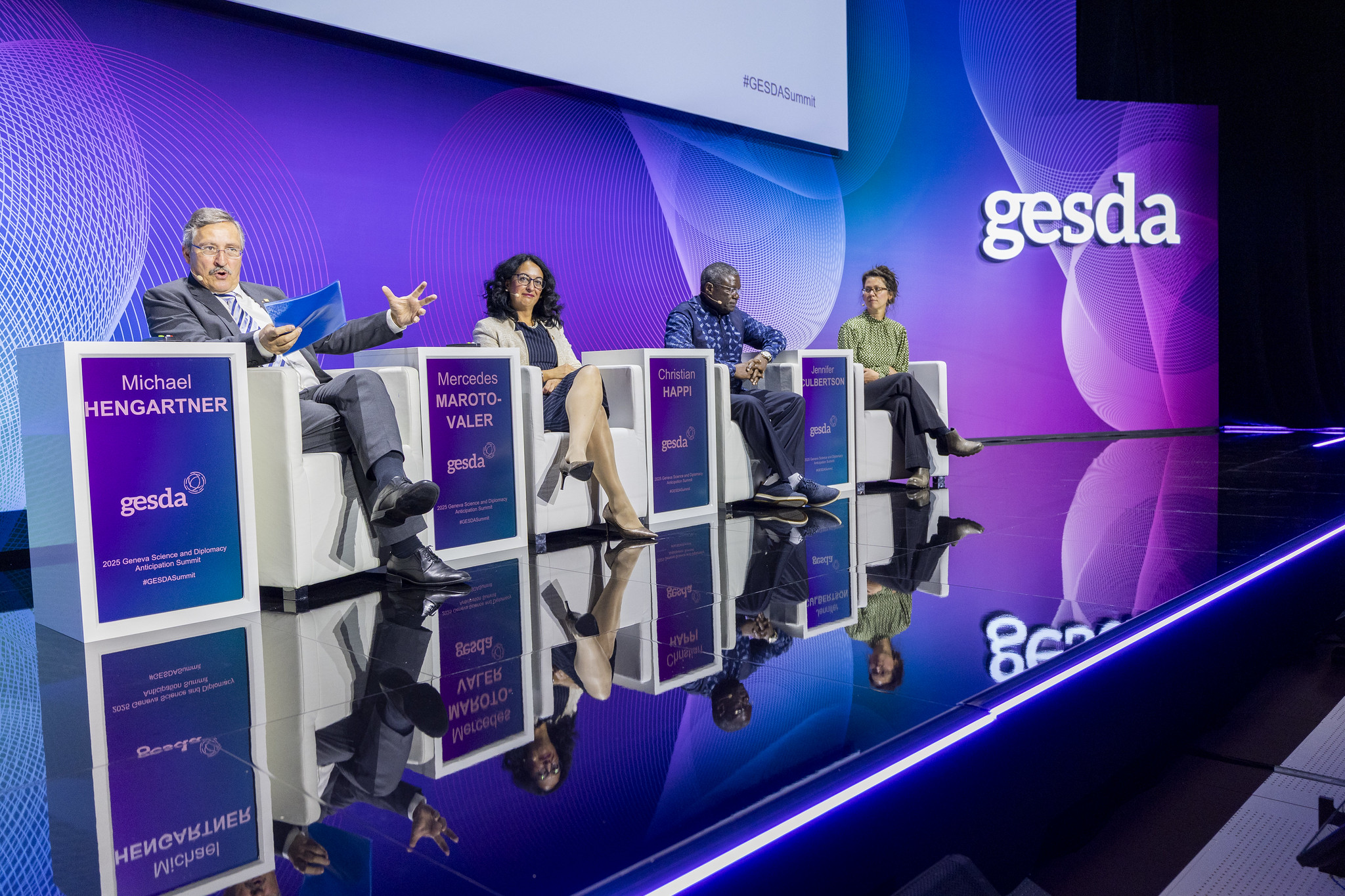 Michael Hengartner, Chair of GESDA’s Academic Forum, at left, introduces the 2026 edition of the GESDA Radar.
Michael Hengartner, Chair of GESDA’s Academic Forum, at left, introduces the 2026 edition of the GESDA Radar.
Threats to Research and Science
Alexandre Fasel, State Secretary of the Swiss Federal Department of Foreign Affairs, expressed his “joy and enthusiasm” for the week, focusing on learning about the new Radar’s practical implications. “I cleared out my agenda from all international and Swiss obligations for the rest of the week,” he said. “In order to be here, to be here to learn what is in the new Radar.”
Christina Kitsos, Vice Mayor of the City of Geneva, defended the role of science as a “method for investigating reality” against any pretexts of elitism. Magdalena Skipper, Editor-in-Chief of Nature and a GESDA Board Member, stressed the critical need for collaboration in this new and challenging geopolitical landscape for scientists and researchers.
The first day was part of a rich program that features approximately 40 sessions, with 90 speakers, including anticipatory briefings from world-renowned scientists based on the Radar’s 5-, 10-, and 25-year predictions.
Interactive discussions were held with global decision-makers and closed-door workshops helped push the agenda on mature initiatives like quantum technologies, space diplomacy, and ecoaugmentation.
All sessions of the Summit were being live streamed.



